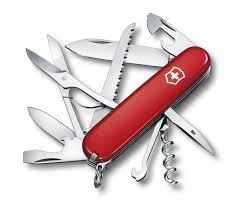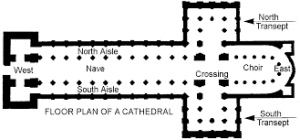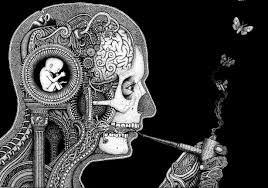What is it like to be a bat? That famous essay by philosopher Thomas Nagel keeps nagging at us.  What is it like to be me? Of this I should have some idea. But why is being me like that? — how does it work? — are questions that really bug me.
What is it like to be me? Of this I should have some idea. But why is being me like that? — how does it work? — are questions that really bug me.
Science knows a lot about how our neurons work. Those doings of billions of neurons, each with very limited, specific, understandable functions, join to create one’s personhood. A leap we’re only beginning to understand.
Steven Mithen’s book, The Prehistory of the Mind, takes the problem back a step, asking how our minds came to exist in the first place. It’s a highly interesting inquiry.
Of course the simple answer is evolution. Life forms have natural variability, and variations that prove more successful in adapting to changing environments proliferate. This builds over eons. Our minds were a very successful adaptation.
But they could not have sprung up all at once. Doesn’t work that way. So by what steps did they evolve? The question is problematical given our difficulty in reverse-engineering the end product. But Mithen’s analysis actually helps toward such understanding.

Which brings in Mithen’s other metaphor for the early human mind: a cathedral. Within it, there are various chapels, each containing one of the Swiss Army knife tools, each one a brain program for dealing with a specific type of challenge.

This recalls Martin Gardner’s concept of multiple intelligences. Departing from an idea that “intelligence” is a single capability that people have more or less of, Gardner posited numerous diverse particularized capabilities, such as interpersonal skills, musical, spatial-visual, etc. A person can be strong in one and weak in another.
Mithen agrees, yet nevertheless also hypothesizes what he calls “general intelligence.” By this he means “a suite of general-purpose learning rules, such as those for learning associations between events.” Here’s where his metaphors bite. The Swiss Army knife doesn’t have a general intelligence tool. That’s why a cat is extremely good at mousing but lacks a comprehensive viewpoint on its situation.
In Mithen’s cathedral, however, there is general intelligence, situated right in the central nave. However, the chapels, each containing their specific tools, are closed off from it and from each other. The toolmaking program doesn’t communicate with the social interaction program; none of them communicates with the general intelligence.

This, Mithen posits, was indeed totally the situation of early humans (like Neanderthals). Our own species arose something like 100,000 years ago, but for around half that time, it seems, we too had minds like Neanderthals, like Mithen’s compartmentalized cathedral, lacking pathways for the various competences to talk to each other.

Now, if you were intelligently building this cathedral, you wouldn’t do it this way. But evolution is not “intelligent design.” It has to work with what developed previously. And what it started with was much like the Swiss Army knife, with a bunch of wholly separate competences that each evolved independently.
That’s good enough for most living things, able to survive and reproduce without a “general intelligence.” Evolving the latter was something of a fluke for humans. (A few other creatures may have something like it.)
The next step was to integrate the whole tool kit; to open the doors of all the chapels leading into the central nave. The difference was that while a Neanderthal could be extremely skilled at making a stone tool, while he was doing it he really couldn’t ponder about it in the context of his whole life. We can. Mithen calls this “cognitive fluidity.”
The way I like to put it, the essence of our consciousness is that we don’t just have thoughts, we can think about our thoughts. That’s the integration Mithen talks about — a whole added layer of cognition. And it’s that layering, that thinking about our thinking, that gives us a sense of self, more powerfully than any other creature.

All this evolved because it was adaptive — enabling its possessors to better surmount the challenges of their environment. But this cognitive fluidity, Mithen says, is also at the heart of art, religion, science — all of human culture.
Once we achieved this capability, it blew the doors off the cathedral, and it was off to the races.
Advertisements